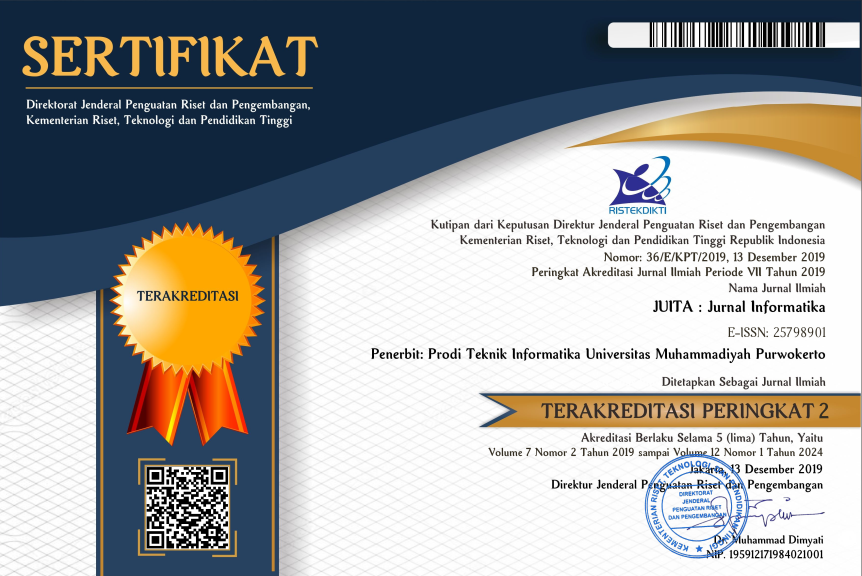Evaluation of Bicluster Analysis Results in Capture Fisheries Using the BCBimax Algorithm
Abstract
Keywords
References
[1] A. M. Tamonob, A. Saefuddi, and A. H. Wigena, “Nonlinear Principal Component Analysis and Principal Component Analysis With Successive Interval in K-Means Cluster Analysis,” Forum Stat. Dan Komputasi, vol. 20, no. 2, pp. 68–77, 2015.
[2] N. Trianasari, I. M. Sumertajaya, Erfiani, and I. W. Mangku, “Application of beta mixture distribution in data on gpa proportion and course scores at the mbti telkom university,” Commun. Math. Biol. Neurosci., vol. 2021, pp. 1–12, 2021, doi: 10.28919/cmbn/5391.
[3] M. G. Silva, S. C. Madeira, and R. Henriques, “Water Consumption Pattern Analysis Using Biclustering: When, Why and How,” Water (Switzerland), vol. 14, no. 12, pp. 1–35, 2022, doi: 10.3390/w14121954.
[4] E. N. Castanho, H. Aidos, and S. C. Madeira, “Biclustering fMRI time series: a comparative study,” BMC Bioinformatics, vol. 23, no. 1, pp. 1–30, 2022, doi: 10.1186/s12859-022-04733-8.
[5] J. A. Hartigan, “Direct clustering of a data matrix,” J. Am. Stat. Assoc., vol. 67, no. 337, pp. 123–129, 1972, doi: 10.1080/01621459.1972.10481214.
[6] Y. Cheng and G. M. Church, “Biclustering of expression data.,” Proc. Int. Conf. Intell. Syst. Mol. Biol., vol. 8, pp. 93–103, 2000.
[7] C. A. Putri, R. Irfani, and B. Sartono, “Recognizing poverty pattern in Central Java using Biclustering Analysis,” J. Phys. Conf. Ser., vol. 1863, no. 1, 2021, doi: 10.1088/1742-6596/1863/1/012068.
[8] V. A. Padilha and R. J. G. B. Campello, “A systematic comparative evaluation of biclustering techniques,” BMC Bioinformatics, vol. 18, no. 1, pp. 1–25, 2017, doi: 10.1186/s12859-017-1487-1.
[9] B. Pontes, R. Giráldez, and J. S. Aguilar-Ruiz, “Biclustering on expression data: A review,” J. Biomed. Inform., vol. 57, pp. 163–180, 2015, doi: 10.1016/j.jbi.2015.06.028.
[10] B. Wang, Y. Miao, H. Zhao, J. Jin, and Y. Chen, “A biclustering-based method for market segmentation using customer pain points,” Eng. Appl. Artif. Intell., vol. 47, pp. 101–109, 2016, doi: 10.1016/j.engappai.2015.06.005.
[11] F. Divina, F. A. G. Vela, and M. G. Torres, “Biclustering of smart building electric energy consumption data,” Appl. Sci., vol. 9, no. 2, 2019, doi: 10.3390/app9020222.
[12] A. Prelić et al., “A systematic comparison and evaluation of biclustering methods for gene expression data,” Bioinformatics, vol. 22, no. 9, pp. 1122–1129, 2006, doi: 10.1093/bioinformatics/btl060.
[13] A. Fahrudin, S. H. Wisudo, and B. Juanda, “PERIKANAN TANGKAP DI INDONESIA : POTRET DAN TANTANGAN KEBERLANJUTANNYA Capture Fisheries in Indonesia : Portraits and Challenges of Sustainability,” pp. 145–162, 2019. DOI:10.15578/jsekp.v14i2.8056
[14] Bappenas, “Kajian Strategi Pengelolaan Perikanan Berkelanjutan,” Kementeri. PPN/Bapenas Direktorat Kelaut. dan Perikan., p. 120, 2014.
[15] S. Dolnicar, S. Kaiser, K. Lazarevski, and F. Leisch, “Biclustering: Overcoming data dimensionality problems in market segmentation,” J. Travel Res., vol. 51, no. 1, pp. 41–49, 2012, doi: 10.1177/0047287510394192.
[16] B. S. Biswal, A. Mohapatra, and S. Vipsita, “A review on biclustering of gene expression microarray data: Algorithms, effective measures and validations,” Int. J. Data Min. Bioinform., vol. 21, no. 3, pp. 230–268, 2018, doi: 10.1504/IJDMB.2018.097683.
[17] N. Kavitha Sri and R. Porkodi, “An extensive survey on biclustering approaches and algorithms for gene expression data,” Int. J. Sci. Technol. Res., vol. 8, no. 9, pp. 2228–2236, 2019.
[18] J. Yang, W. Wang, H. Wang, and P. Yu, “δ-clusters: Capturing subspace correlation in a large data set,” Proc. - Int. Conf. Data Eng., pp. 517–528, 2002, doi: 10.1109/icde.2002.994771.
[19] Y. Lee, J.-H. Lee, and C.-H. Jun, “Validation measures of bicluster solutions,” Ind. Eng. Manag. Syst., vol. 8, no. 2, pp. 101–108, 2009, [Online]. Available: http://kiie.org/iems/contents/vol8no2/8-2-04.pdf
[20] X. Liu and L. Wang, “Computing the maximum similarity bi-clusters of gene expression data,” Bioinformatics, vol. 23, no. 1, pp. 50–56, 2007, doi: 10.1093/bioinformatics/btl560.
DOI: 10.30595/juita.v11i1.15457
Refbacks
- There are currently no refbacks.

This work is licensed under a Creative Commons Attribution 4.0 International License.
ISSN: 2579-8901
- Visitor Stats
View JUITA Stats










